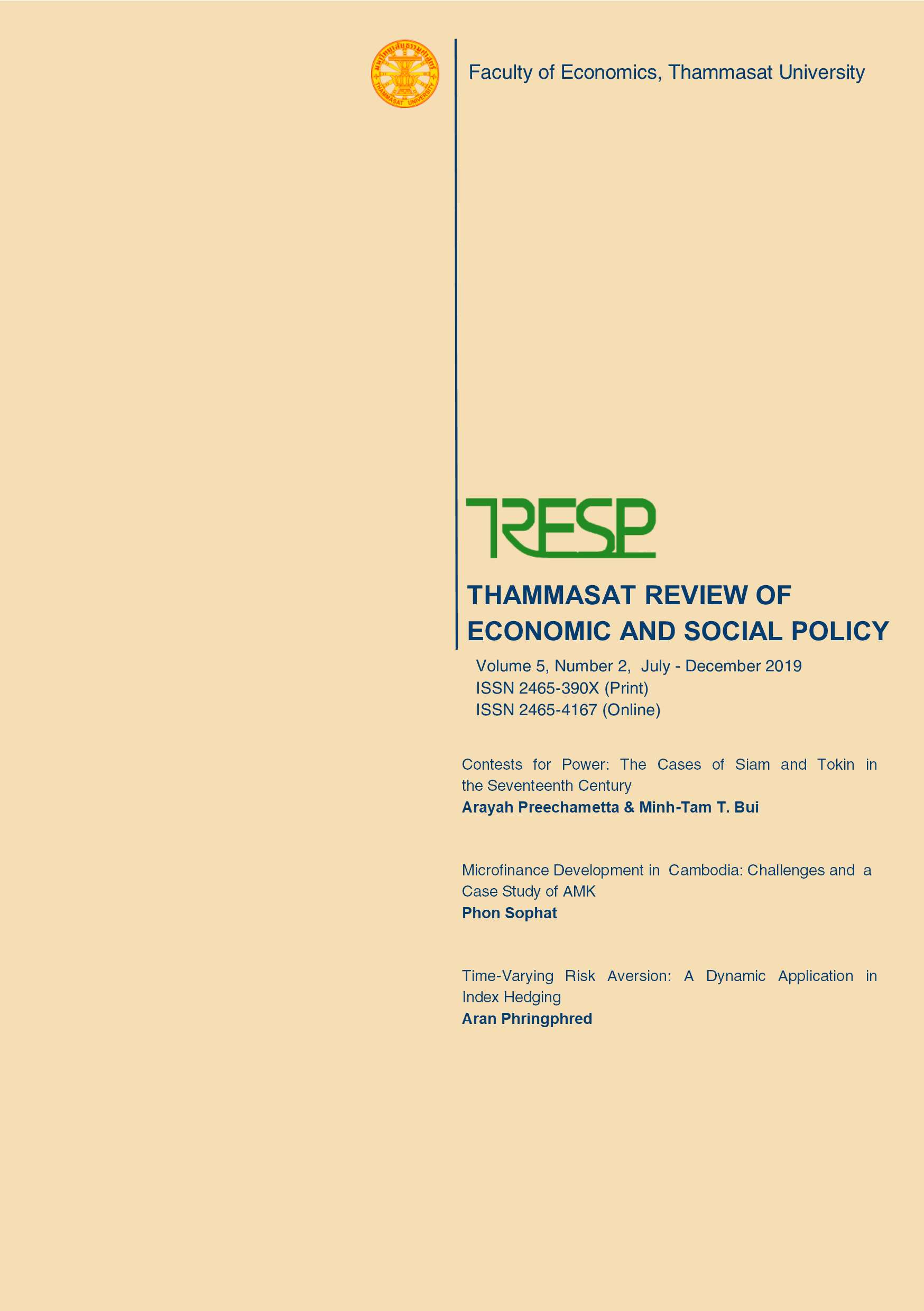Contests for Power: The Cases of Siam and Tonkin in the Seventeenth Century
DOI:
https://doi.org/10.14456/tresp.2019.4Keywords:
Contests for Power, Negotiation-Proof Equilibrium, Moral Hazard, Public SignalAbstract
We extend a model of contests for power in Myerson (2008) by adding a random adverse public signal into the model. Our analysis indicates that an absolute, or a weak court, leader may have more difficulty in raising the income stream that he needs to credibly promise to his supporters. In addition, this leader is more likely to voluntarily accept a lower bound for the fraction of revenue that he needs to pay his supporters, a lower bound of a number of his supporters, and a lower bound of suppression against him. For a weak court leader, he may also gain lower net benefit from reorganizing his supporters into a strong court, as compared to the case of Myerson (2008). Finally, a weak court leader may face more restrictions of getting enough supporters to fight for a negotiation-proof equilibrium. We then apply these new findings, in search of a more insightful and logical explanation, to some historic contests for state power episodes during seventeenth century Siam and Tonkin.
References
Cox, G., North, D., & Weingast, B. (2015). The Violence Trap: A Political-Economic Approach to the Problems of Development. Available at SSRN: https://ssrn.com/abstract=2370622
Love, R. (1999). Monarchs, Merchants, and Missionaries in Early Modern Asia: The Missions Étrangères in Siam, 1662-1668. The International History Review, 24(1), 1- 27.
Myerson, R. (2008). The Autocrat’s Credibility Problem and Foundations of the Constitutional State. The American Political Science Review, 102(1), 125-139.
Powell, R. (2012). Persistent Fighting and Shifting Power. American Journal of Political Science, 56(3), 620-637.
Reid, A. (1990). The Seventeenth-Century Crisis in Southeast Asia. Modern Asian Studies, 24(2), 639-659.



